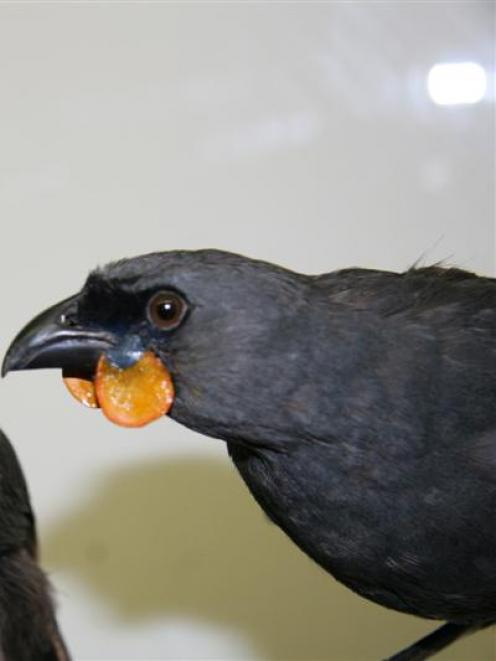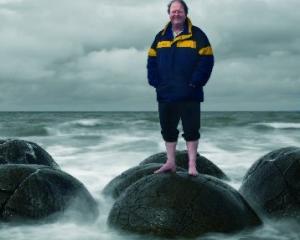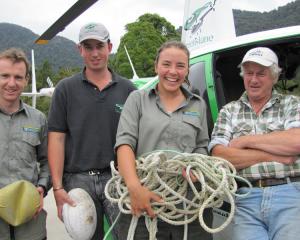
South Island Kokako
Callaeas cinerea
Orange-wattled crow,
organ-bird, gillbird, koka
The South Island kokako belongs to a unique avian family - the New Zealand wattle birds, formally called Callaeatidae.
Its cousins are the huia, a North Island species that became extinct around 1907, and the North Island and South Island saddlebacks.
In a taxonomic review in 2001, paleoecologists Richard Holdaway and Trevor Worthy identified the South Island kokako as Callaeas cinerea, a species separate from its North Island relative and known in some southern areas in pre-European times as koka.
Callaeas is a generic Greek word for cock's wattles, and cinerea means ash-grey.
The bird was described scientifically from a specimen collected in Queen Charlotte Sound by Captain James Cook's 1777 expedition, decades before the North Island bird was formally described and named.
In the late 19th century, the two kokako were described by Sir Walter Buller in his landmark book on New Zealand's birds as separate species. Later they were deemed to be more closely related and formally described as subspecies.
They continue to be distinguished mainly by the colour of their wattles: lapis-lazuli blue for the North Island bird, deep orange for the South Islander.
Researchers are now less certain, however, that wattle colours are separated by Cook Strait.
Touches of orange appear in North Island birds, and blue is known to appear with the orange wattles of the South Island species (the orange wattles commonly have a blue base or spots).
Perhaps wattle colouring changes with age. The wattles swell in the breeding season and the sexes are difficult to tell apart.
In January 2007, the Department of Conservation in Wellington proclaimed the species extinct when it published a triennial review of the status of New Zealand native fauna and flora - the New Zealand Threat Classification System Lists 2005.
With this review New Zealand's unenviable list of extinct species increased by seven - six invertebrate animals (three snails, two beetles and a weevil) and the South Island kokako, "for which there have been no confirmed sightings for 45 years".
This, said the report, was "despite searching". Thus the South Island kokako became the 16th bird to be declared extinct since 1840.
Support for the Department's position came from the Ornithological Society of New Zealand's Atlas of Bird Distribution in New Zealand 1999-2004, published in 2007. The atlas is silent on South Island kokako, declaring there were no records for the focus years of the survey.
In pre-human times, the species was widely distributed across the South Island and Stewart Island. Sightings ranged from seashore forest edges to high-altitude forest.
The entire western side of the South Island from Northwest Nelson to Fiordland was a stronghold for the kokako but it was also found in patches of southeast coastal forest, from Dunedin to the Catlins.
The Mount Cargill forest overlooking Otago Harbour had "very plentiful" numbers, according to Otago geologist James Hector.
There were reports also from Banks Peninsula. In the South Island, the kokako was still fairly common in the 1870s. But from then, it began disappearing at a rapid rate.
Why did no-one take the initiative 20 to 50 years ago, when the species was obviously struggling to survive, to intensely search for and protect South Island kokako? Future ornithologists may well ask that question.
Possible answers: perhaps the existence, even if threatened, of the similar North Island kokako detracted from any action being taken back then.
Perhaps the mission looked altogether too hard and laborious. Perhaps officialdom thought it was a lost cause.
Meanwhile, the reports still come in of presumed kokako calls and observations, from Fiordland, the West Coast and the Murchison area, and the searching continues.
It will not be stilled by the label of extinction applied by the Department of Conservation in 2007.
Doomed? Maybe. Extinct? Not yet.




